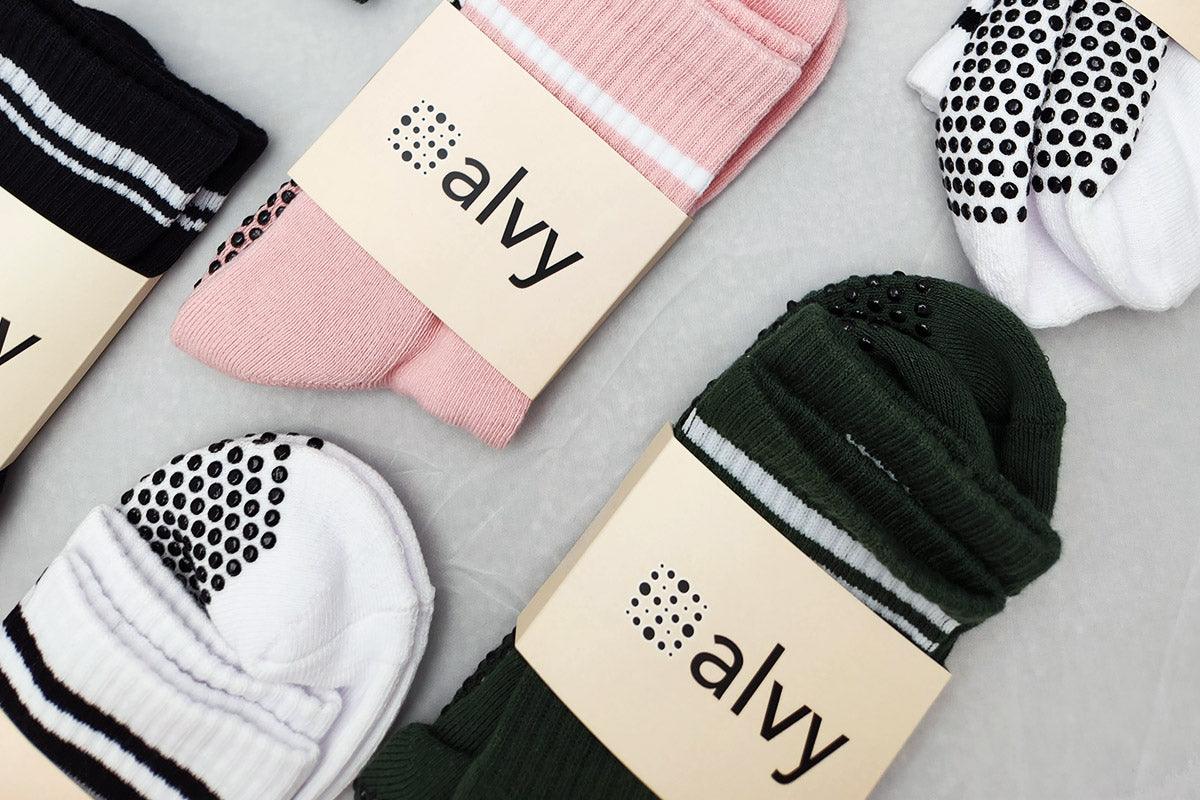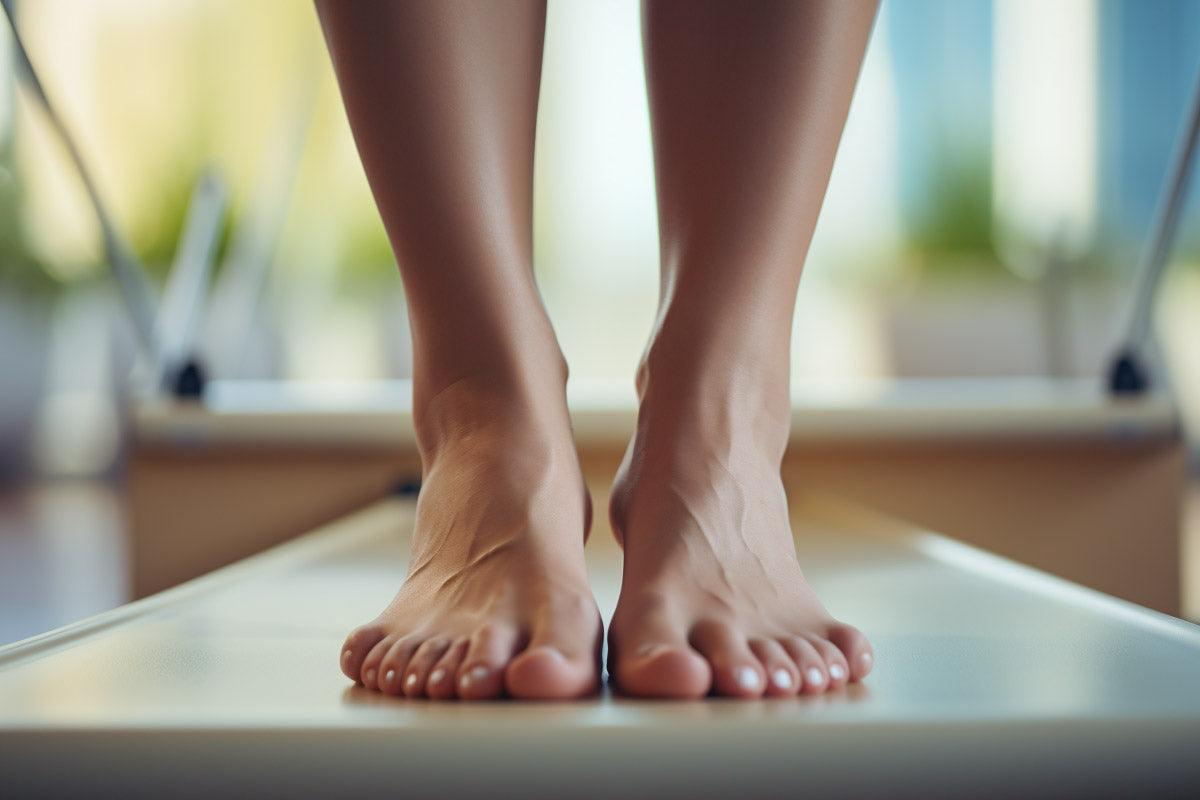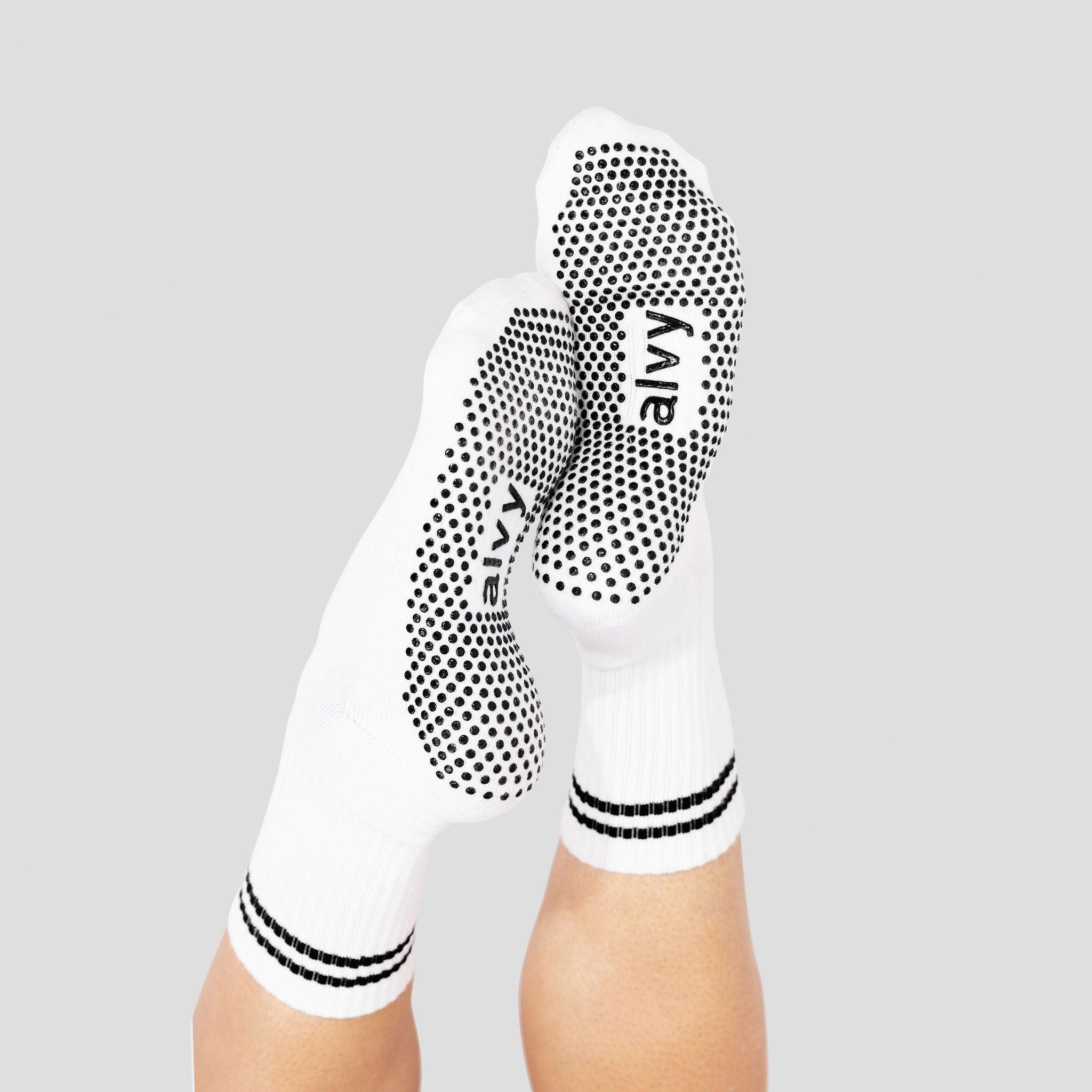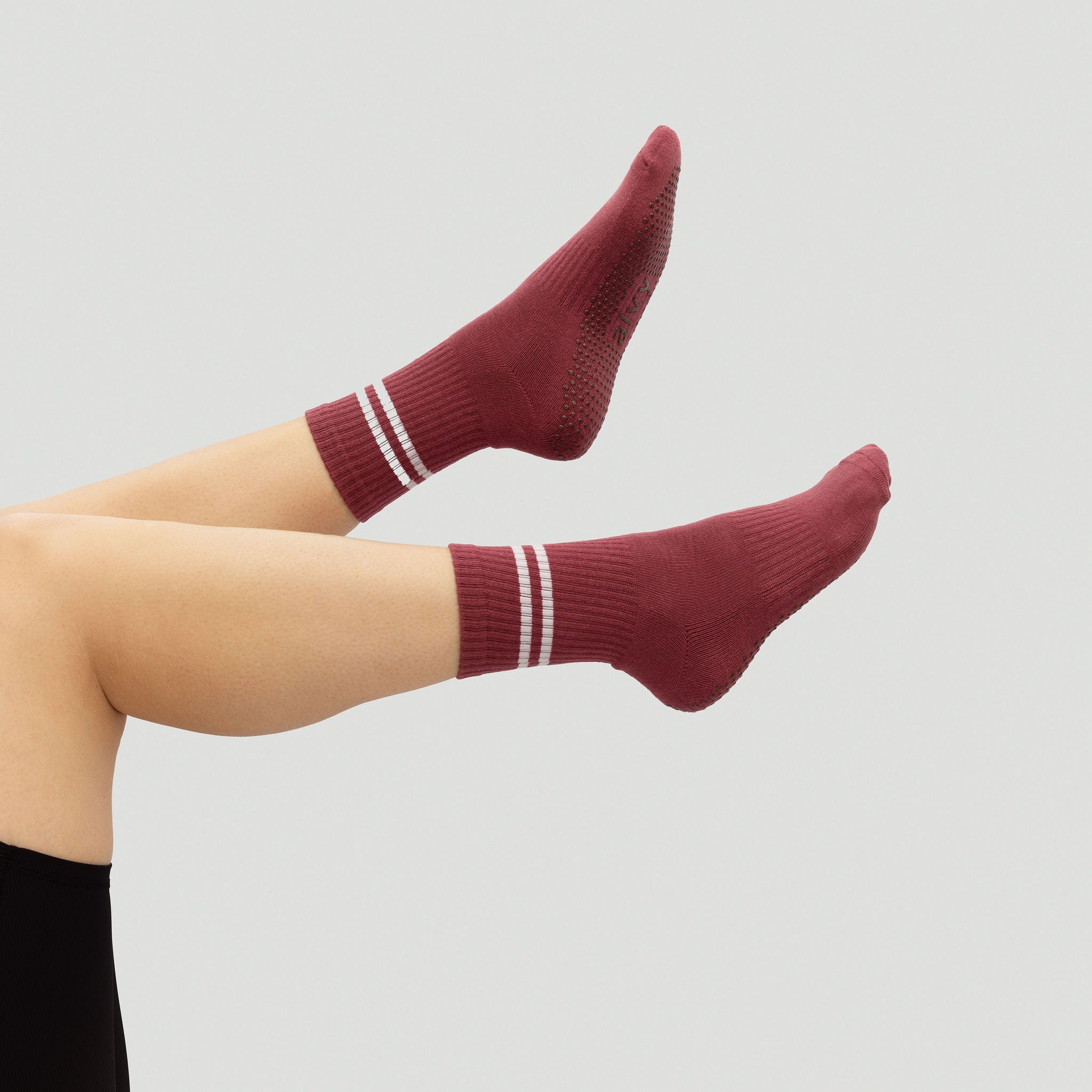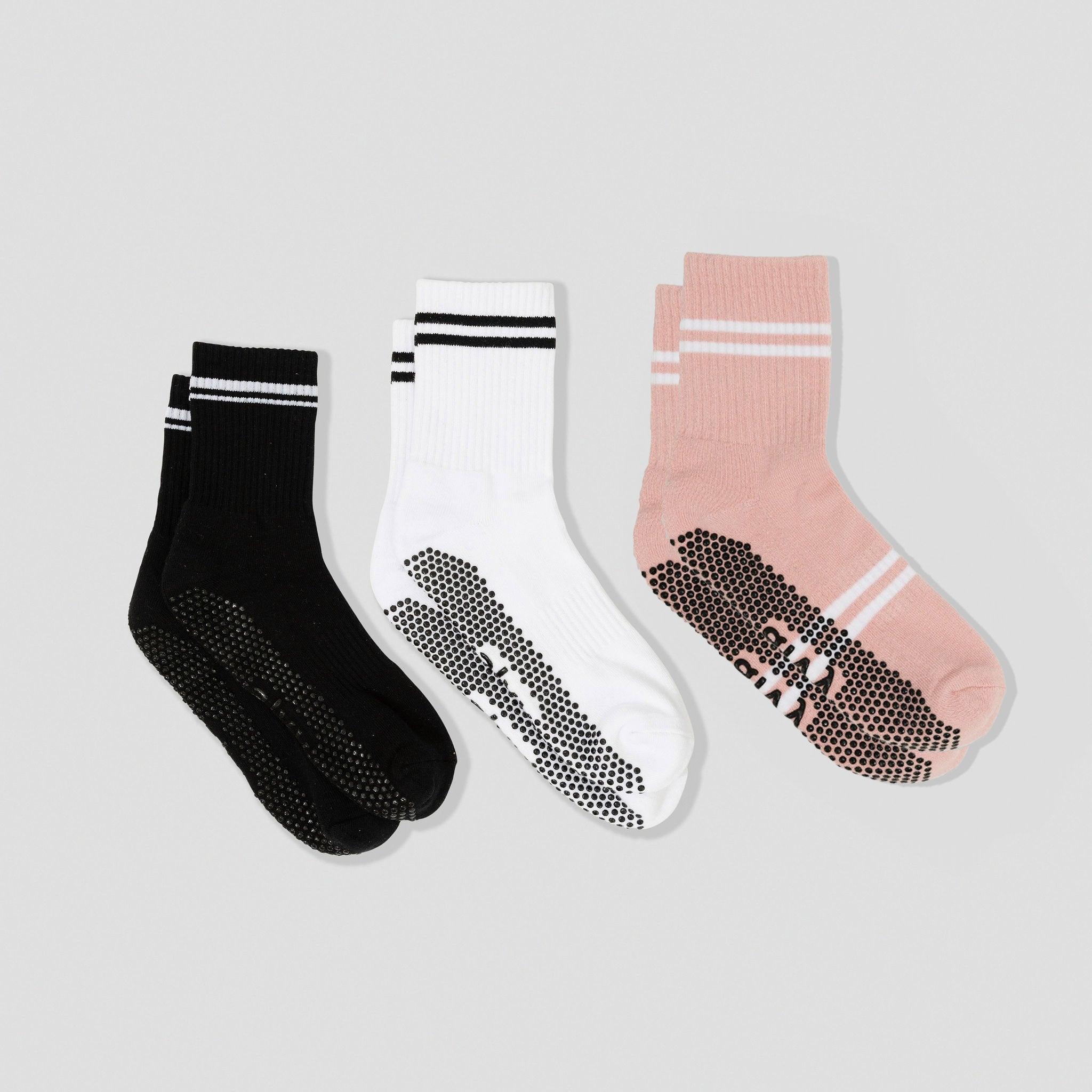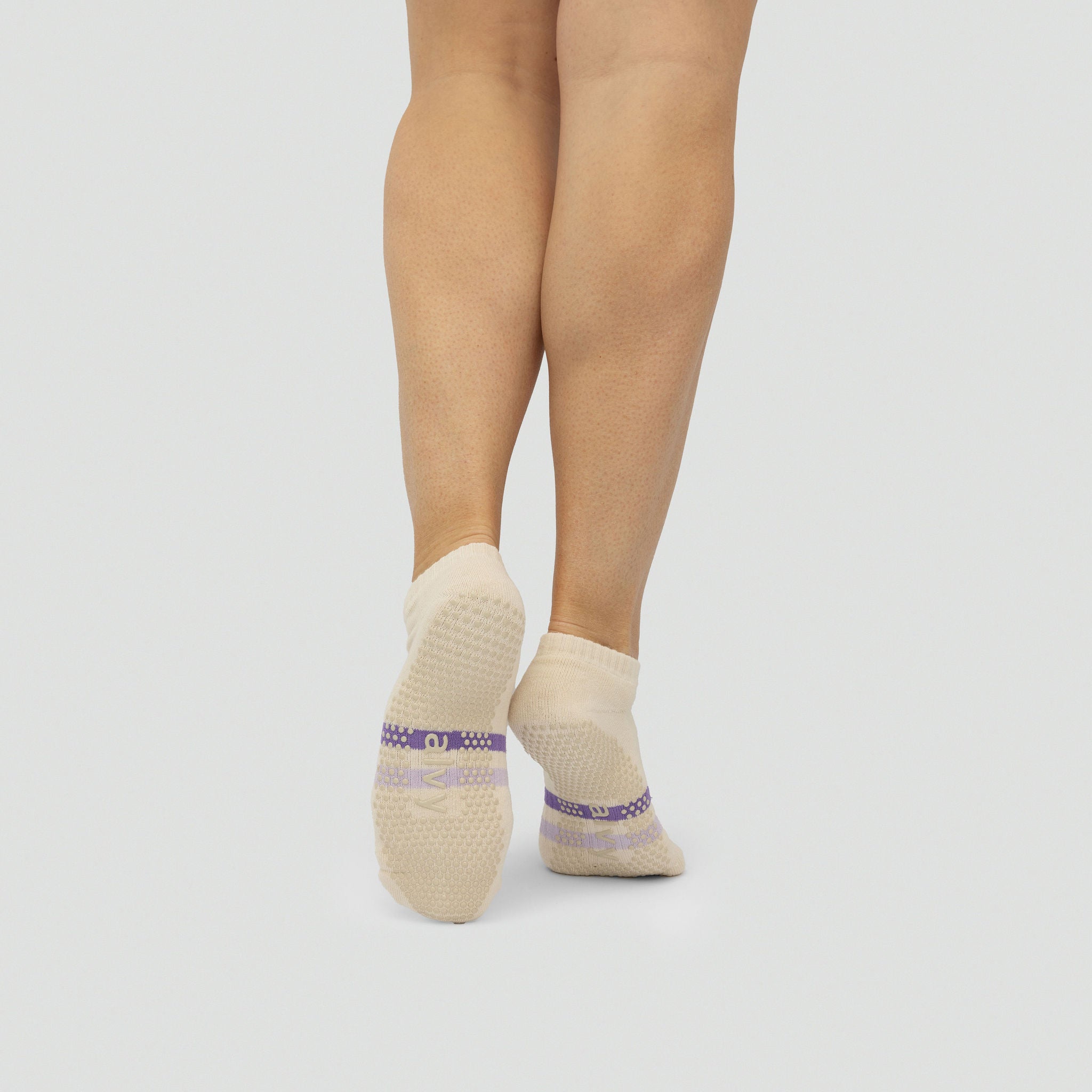You may have come across grip socks in your search for the perfect workout gear for Pilates, yoga, or barre. Also known as non-slip socks, are designed to provide extra traction on slippery surfaces with the material grips on the bottom. Why? They can help prevent slips and falls. But what are grip socks, and are they worth the investment?
In this article, we'll explore how grip socks work, what activities you can use them for, and what to consider when buying a pair. We'll also provide a comparative analysis of the best grip socks for Pilates and answer some frequently asked questions.
Key Takeaways
- Grip socks are designed to provide extra traction on slippery surfaces during low-impact workouts.
- They work by using rubber or similar material grips on the bottom to help prevent slips and falls.
- Grip socks provide many benefits, including better grip and stability, added comfort and support, and improved hygiene (some studios mandate wearing socks).
Grip Socks Explained: What Is Their Purpose?
Grip socks, also known as non-slip socks, or grippy socks, are purpose-designed to provide extra traction on slippery surfaces and one of the essential items for Pilates at home or in the studio. They have silicon or PVC material grips on the bottom, which helps prevent slips and falls. They are commonly used in hospitals, yoga studios, and for at-home workouts.
Grip socks are designed to keep your feet stable and secure on the ground, especially when performing exercises that require balance and stability. They can also be used to protect your feet from cold floors and prevent blisters.
Grip Sock Materials and Design
There are several different types of grip socks, such as spandex, nylon, and cotton. While some socks feature breathability to keep your feet dry and cool, others are made with additional cushioning for maximum comfort. Although grip socks come in a variety of designs, they usually feature a non-slip sole and a snug fit. Some feature full-foot designs for optimum covering, while others feature individual toe slots for extra grip and balance. For example, ALVY's most common are full-length socks, also known as crew grip socks, or ankle-length grip socks referred to as low-rise grip socks.
How Do They Work and 6 Reasons You Should Wear Them
Grip socks are designed to provide extra traction on slippery surfaces, such as polished floors or turf fields. They have rubber or similar material grips on the bottom, which helps prevent slips and falls.
Here are six reasons why you should wear grip socks:
- Improved Performance: Grip socks can improve your performance in Pilates by providing better traction and stability on the mat or reformer.
- Injury Prevention: They can also help prevent injuries by reducing the risk of slipping and falling from reformers. They provide extra support and stability to your feet, which can help prevent sprains and other injuries.
- Comfort: Non-slip socks are designed to be comfortable and breathable, making them ideal for low-impact activities. The ALVY range of grip socks comes with ribbing for a snug fit around the foot.
- Hygiene: Grip socks can enhance cleanliness by halting the growth of fungi and bacteria. You can wear them as a line of defence between your feet and public areas like gym floors and showers in locker rooms.
- Versatility: Grip socks are not just for Pilates, yoga, or barre. They can be worn by anyone who wants to improve their traction and stability on any surface.
- Affordability: They are an affordable way to improve your performance and prevent injuries. They are available in a variety of styles and colours to match your activewear apparel.
What Activities Can You Use Grip Socks For?
Grip socks are versatile and can be used for a variety of activities that require traction on smooth surfaces. Here are some of the most common activities that grip socks are used for:
- Yoga and Pilates. Yoga and Pilates require a lot of balance and stability, and grip socks can help you maintain your footing on the mat. Grip socks with silicone dots on the sole provide extra grip, so you can hold your poses with confidence.
- Barre. Barre classes involve a lot of small, controlled movements that require precise footwork. Grip socks can help you maintain your balance and prevent slipping on the smooth studio floor.
- Dance. Dance classes often take place on smooth surfaces like hardwood or tile, which can be slippery and dangerous. Grip socks provide extra traction, so you can move with confidence and avoid falls.
- Hospital and Rehab Facilities. Hospitals and rehab facilities often require patients to wear non-slip socks to prevent falls and injuries. Grip socks are a great option because they provide extra traction without compromising comfort.
How Much Better Are Grips Socks vs Regular Socks?
Grip socks are designed to provide extra traction on slippery surfaces. Regular socks, on the other hand, are not designed to provide any grip. Grip socks have rubber or similar material grips on the bottom, which helps prevent slips and falls. Regular socks are typically made from cotton, wool, or synthetic materials. Grip socks, on the other hand, often incorporate specific blends designed to enhance grip.
What To Look For Before Buying
When considering purchasing grip socks, there are a few things you should keep in mind to ensure you are getting the best product for your needs. Here are some user considerations to keep in mind:
Choose the Right Grip Socks
When choosing grip socks, it is important to consider the type of activity you will be doing. Grip socks for yoga and Pilates will have different requirements than grip socks for running or other sports. Look for socks that have the right amount of grip for your activity, as too little grip can be ineffective, while too much grip can be uncomfortable. It is also important to consider the fit of the sock. Grip socks should fit snugly, but not be too tight. Make sure to check the sizing chart before purchasing to ensure you get the right fit.
Wearing The Socks
Grip socks can be worn in a variety of ways, depending on your activity. For yoga and Pilates, they are typically worn without shoes. For running and other sports, they can be worn with shoes or on their own. Make sure your shoes are compatible with grip socks before pairing them with them. To accommodate the additional material of the sock, look for shoes with a wide-toe box. Avoid shoes with excessive cushioning since this will lessen the grip's effectiveness.
Care and Maintenance
To ensure your grip socks last as long as possible, it is important to take proper care of them. Most grip socks can be machine washed, but make sure to follow the care instructions on the label. Avoid using fabric softener, as this can reduce the effectiveness of the grip.
So, How Much Do Grip Socks Cost?
The price range for grip socks can vary depending on the brand and the specific features offered. Generally, you can expect to pay anywhere from $10 to $30 for a pair of grip socks. Grip socks are widely available at sporting goods stores, online retailers, and specialty shops. Some popular retailers that carry grip socks include Rebel Sport, Athlete's Foot, and Amazon. ALVY's grip socks are priced at $22.95 and include additional features than typical socks in common stores like above.
Frequently Asked Questions
What purposes do grip socks serve in Pilates and other sports?
Grip socks can be used to provide extra traction on slippery surfaces, which makes them ideal for activities such as Pilates, yoga, dance, and other sports that require stability and balance. The rubber or similar material grips on the bottom of grip socks prevent slips and falls, allowing you to perform exercises with greater confidence and safety.
Are there any drawbacks to using grip socks?
While grip socks offer numerous benefits, there are some potential drawbacks to be aware of. For example, some people may find that the grips on the bottom of the socks cause discomfort or irritation on their feet. Additionally, people can find wearing grip socks makes their feet sweat more and limits their range of motion or flexibility in certain movements.
Is it effective to layer grip socks over standard socks for additional traction?
Although some individuals could decide to wear grip socks on top of regular socks in order to increase traction, this is usually not advised. Wearing multiple pairs of socks can make your feet overheated and perspiring, which can be uncomfortable and potentially result in blisters. It is preferable to use grip socks alone instead, making sure to select a pair that offers the ideal amount of support and grip for the task at hand.

